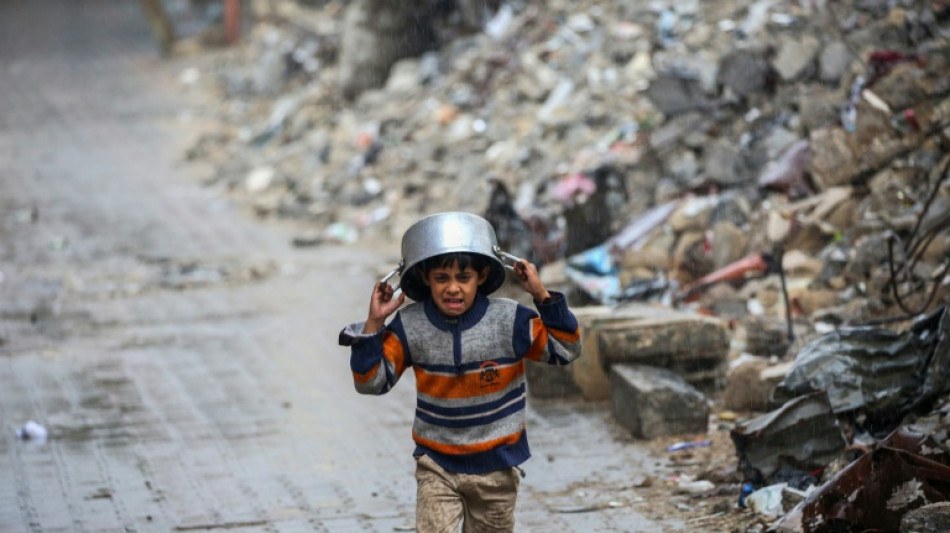
RBGPF
0.1600


At a crowded camp in Gaza for those displaced by the war between Israel and Hamas, Ayman Siam laid concrete blocks around his tent to keep his family dry as rain threatened more misery.
"I'm trying to protect my tent from the rainwater because we are expecting heavy rain. Three days ago when it rained, we were drenched," Siam said, seeking to shield his children and grandchildren from more wet weather.
Siam is among thousands sheltering at Gaza City's Yarmuk sports stadium in the north after being uprooted by the Israel-Hamas war.
He lives in one of many flimsy tents set up at the stadium, where the pitch has become a muddy field dotted with puddles left by rainfall that washed away belongings and shelters.
People in the stadium dug small trenches around their tents, covered them with plastic sheets, and did whatever they could to stop the water from entering their makeshift homes.
Others used spades to direct the water into drains, as grey skies threatened more rain.
- 'Catastrophic' -
The majority of Gaza's 2.4 million people have been displaced, often multiple times, by the war that began with Hamas's attack on southern Israel on October 7, 2023.
With many displaced living in tent camps, the coming winter is raising serious concerns.
Mahmud Bassal, spokesman for Gaza's civil defence agency, told AFP that "tens of thousands of displaced people, especially in the central and south of Gaza Strip, are suffering from flooded tents due to the rains", and called on the international community to provide tents and aid.
International aid organisations have sounded the alarm about the deteriorating situation as winter approaches.
"It's going to be catastrophic," warned Louise Wateridge, an emergency officer for the UN agency for Palestinian refugees currently in Gaza.
"People don't have anything that they need," she said from Gaza City. "They haven't had basic, basic, basic things for 13 months, not food, not water, not shelter," she added.
"It's going to be miserable, it's going to be very desperate."
The rainy period in Gaza lasts between late October and April, with January being the wettest month, averaging 30 to 40 millimetres of rain.
Winter temperatures can drop as low as six degrees Celsius (42 Fahrenheit).
Recent rain has flooded hundreds of tents near the coast in Deir el-Balah, in central Gaza, as well as in Khan Yunis and Rafah in the south, according to Gaza's civil defence.
- 'Nothing left' -
Auni al-Sabea, living in a tent in Deir el-Balah, was among those bearing the brunt of the weather without proper accommodation.
"The rain and seawater flooded all the tents. We are helpless. The water took everything from the tent, including the mattresses, blankets and a water jug. We were only able to get a mattress and blankets for the children," said the displaced man.
"Now, we are in the street and we have nothing left," said the 40-year-old from Al-Shati Camp.
At the stadium, Umm Ahmed Saliha showed the water that pooled under her tent during morning prayers. "All of this is from this morning's rain and winter hasn't even started properly."
Hamas's attack on October 7 last year resulted in the deaths of 1,206 people, most of them civilians, according to an AFP tally of Israeli official figures.
Israel's retaliatory campaign has killed 44,235 people in Gaza, according to figures from the Hamas-run territory's health ministry that the United Nations considers reliable.
bur-az-phy-raz/dcp/dv
S.Yamada--JT